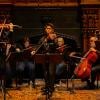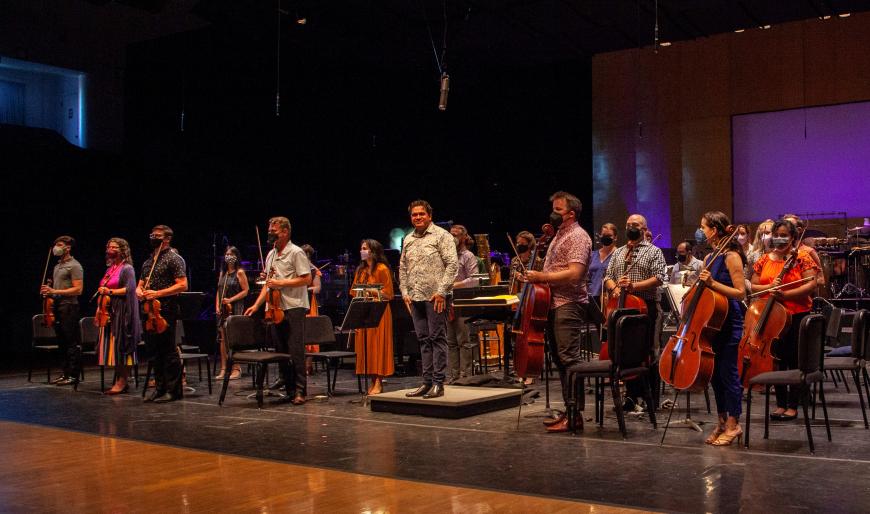
The pandemic isn’t over.
That’s the hard lesson that the Cabrillo Festival of Contemporary Music learned as it prepared for the second of its two weekends of concerts this year on Aug. 6 and 7 at the Santa Cruz Civic Auditorium, in the festival’s first full schedule of live performances since 2019.
After a successful opening weekend, COVID concerns within the orchestra led to the removal of winds and brass from the ensemble for the ensuing concerts. This required choosing and rehearsing new material for over half the timeslots in question, with only a week in which to prepare it. What the festival needed was music for strings, music for percussion, and — if possible — music for strings and percussion. Cabrillo got all three. This is a gallant orchestra, and Music Director Cristian Măcelaru is a bold leader, and it all came out as if it had been planned this way.
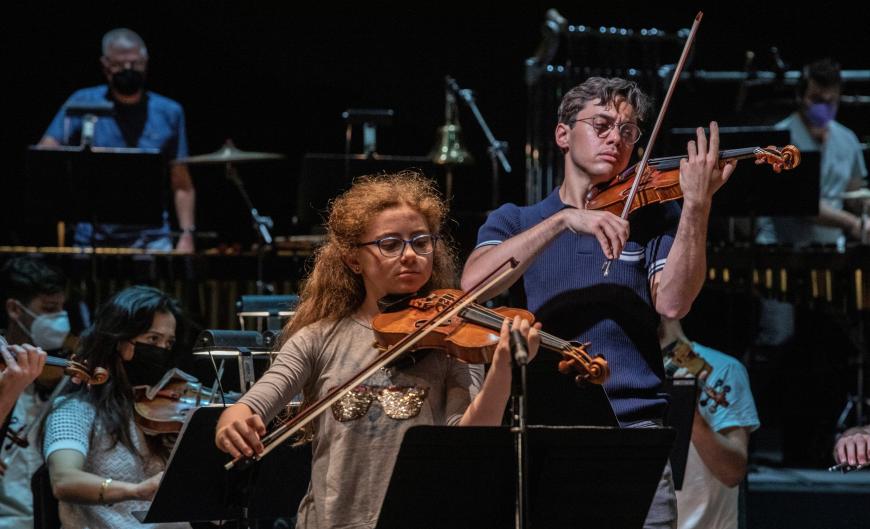
The headline works for the two concerts survived intact, or nearly so. Sunday’s principal work was Intonations: Songs From the Violins of Hope, a song cycle by Jake Heggie. This is a piece with a complex history. It was commissioned by Music at Kohl Mansion in honor of the local residency of the Violins of Hope, a collection of instruments that survived the Nazi Holocaust and have been restored and curated by two Israeli luthiers. In its original form, with the vocalist and a solo violinist accompanied by a string quartet, the work premiered at Kohl in January 2020. Cabrillo commissioned a version with full orchestra to debut that summer, but of course that didn’t happen. A hybrid arrangement, mixing orchestra and string quartet, was released on video by Cabrillo last year. The orchestral version was finally to appear in concert this Sunday, but again it didn’t happen. What was played was an arrangement for strings (including harp) and percussion.
Despite the limited orchestra, the larger accompaniment and the care of Măcelaru’s conducting made for an even richer experience than the chamber version. Gene Scheer’s lyrics, drawn from stories of the individual violins and mostly told as the instruments’ first-person narratives, recount harrowing tales of courage in the face of death and destruction.
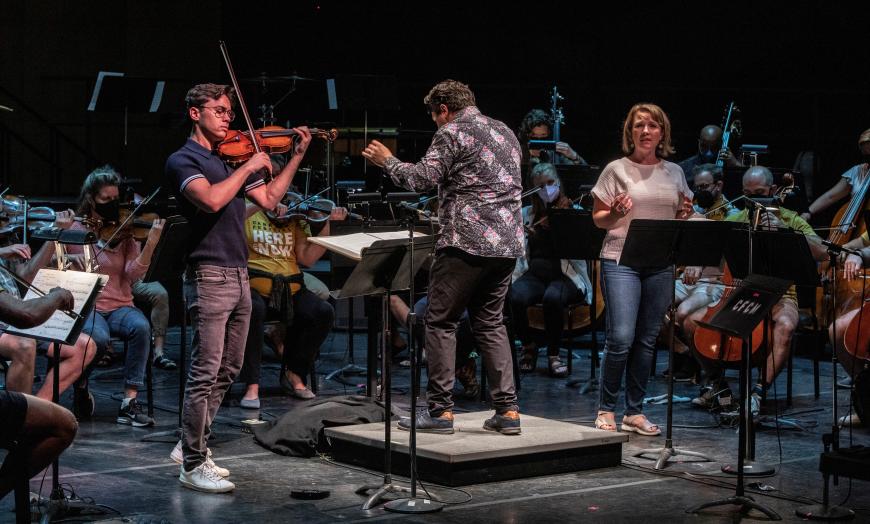
Mezzo-soprano Sasha Cooke, who also sang in the first performance, gave the words simple and moving utterance. The lyrics were projected on a screen, but Heggie assured they were always clearly audible whatever the accompaniment. Benjamin Beilman as solo violinist played sometimes with Cooke, sometimes in alternation with her, giving commentary on the stories. The orchestra, though subsidiary, contributed effectively: chimes in the song “Exile” standing for images of loss; Beilman and the orchestra surging into a quotation from Mendelssohn’s Violin Concerto in “Motele,” when a young violinist is described as playing the piece — first for his family, then, after they are killed, at the demand of Nazi officers whom he eventually destroys with smuggled gunpowder.
Intonations is a searing work, beneficiary of all of Heggie and Scheer’s experience creating operas together, poured into this vessel of a song cycle.
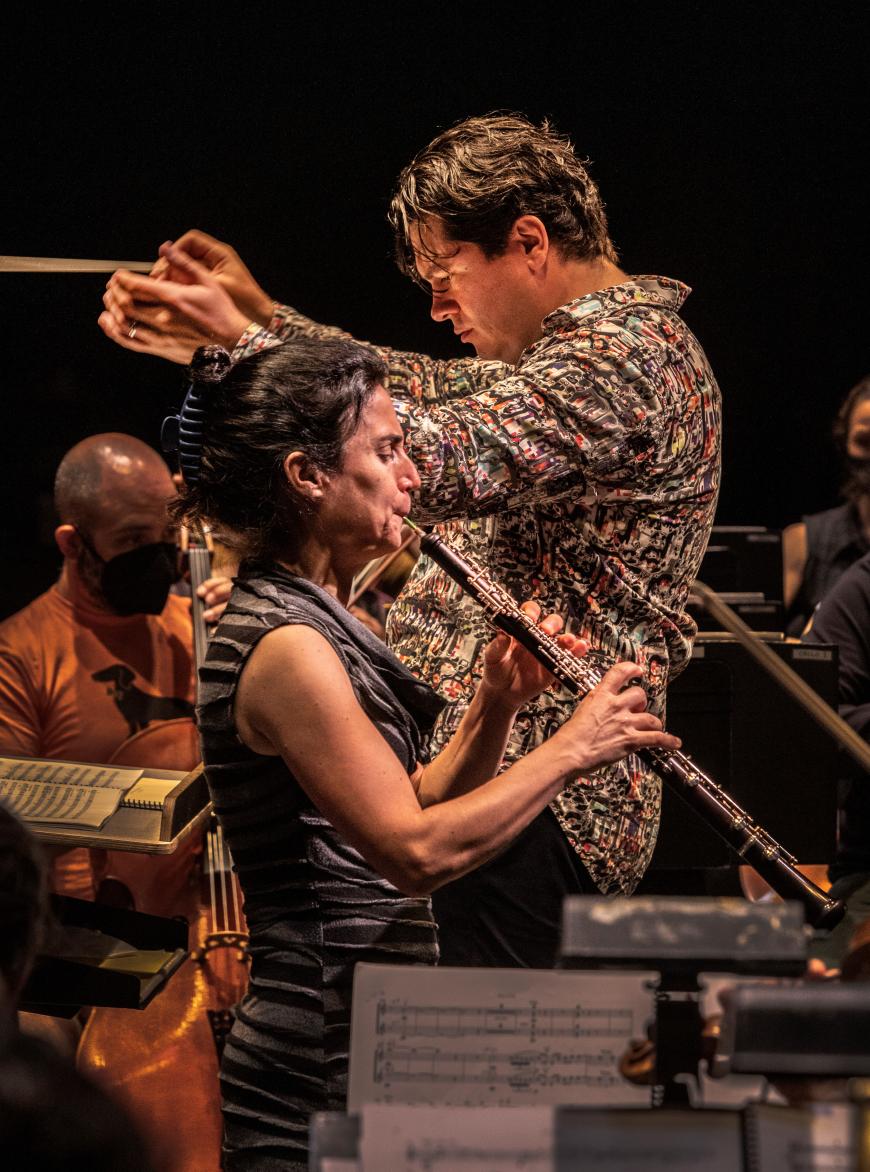
Saturday’s keynote piece survived entirely intact. This was Moonlight, the second concerto for oboe and strings by Kevin Puts. The solo oboe was given a pass from the pandemic restrictions: Katherine Needleman, principal oboist of the Baltimore Symphony, for whom the work was written, appeared to play it. The soloist gets a lot of extended lyricism in this concerto but also – especially in the active second movement — low blats and high squeals. At times the oboe seems to strain itself at the high end of its register.
Often the string orchestra produces fast throbbing pulsations of a minimalist bent that work well as a background for the soloist’s lyricism. In other passages, the oboe has difficulty finding its way over piercing harmonics from the strings. More successfully, a growing full accompaniment in the finale seems to pull the oboe into its warm embrace. This is a concerto that begins tentatively and becomes more confident as it goes on. Puts’s genial way as a composer is familiar to Cabrillo audiences and was on its typical display here.
Măcelaru introduced the weekend’s only work for strings alone by explaining that he’d intended to present it as a surprise addition to Sunday’s concert. Instead, it appeared as a regular program item on Saturday. It was by Valentin Silvestrov, Ukraine’s most prominent, and most senior, living composer. Now 84, he was recently evacuated to Berlin to escape the war engulfing his country, so he and his work have been on Măcelaru’s mind. Silent Music, which Silvestrov wrote 20 years ago, is a brief suite of waltz and serenade. It is a work typified by simple melodies over pizzicato backing, with pauses interrupting the waltz rhythm, and it is suffused with a sweetness of tone that’s surprising to listeners familiar with Silvestrov’s darker and more austere large-scale concert works.
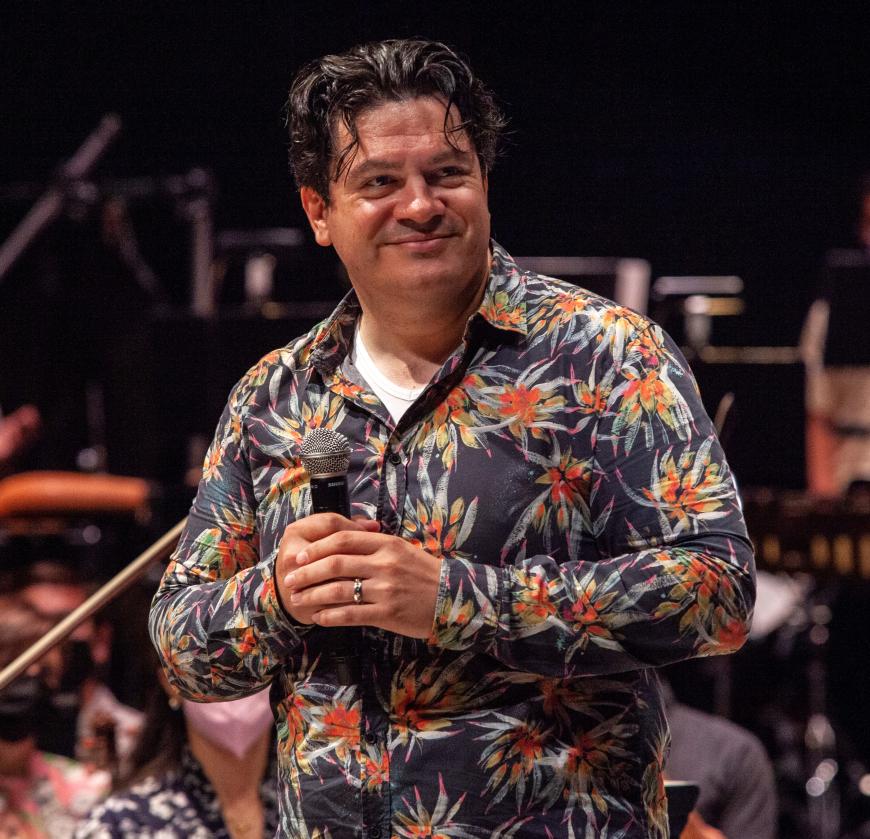
Măcelaru and the Cabrillo staff were able to turn up two major suites written for the unusual combination of strings and percussion. Apparitions by Richard Danielpour, which concluded Saturday’s concert, is an interesting find. In a dry but tonal idiom, this work of five varied movements principally explores string sonorities, with the percussion salting the music, mostly well mixed in. The percussion does stand out occasionally, especially in the last movement, which commemorates a once-famous pet monkey named Johnnie Brown (whose grave is still visitable in Palm Beach, Florida). Here the mallet instruments frequently interject quotations from the song “Pop Goes the Weasel,” whose lyrics are about a monkey as much as they’re about a weasel.
Sunday’s concert was filled out with a more familiar piece, the endearingly goofy Carmen Suite by Rodion Shchedrin. Written as a dance vehicle for the composer’s wife, a ballerina, this work takes well-known orchestral nuggets from Bizet’s opera suites and rearranges them for the chosen ensemble, with the percussion well to the fore. Famous melodies in the strings are backed by a large clanging battery or are handed over to the tuned percussion entirely. Then there’s the moment when the “Toreador Song” completely vanishes, leaving only its ghostly accompaniment behind.
Sunday’s rendition was less percussion-heavy than other performances I’ve heard. Regardless of the balance, it was impressive that the orchestra was able to prepare this 40-minute work — and all the other new material — in only a week.
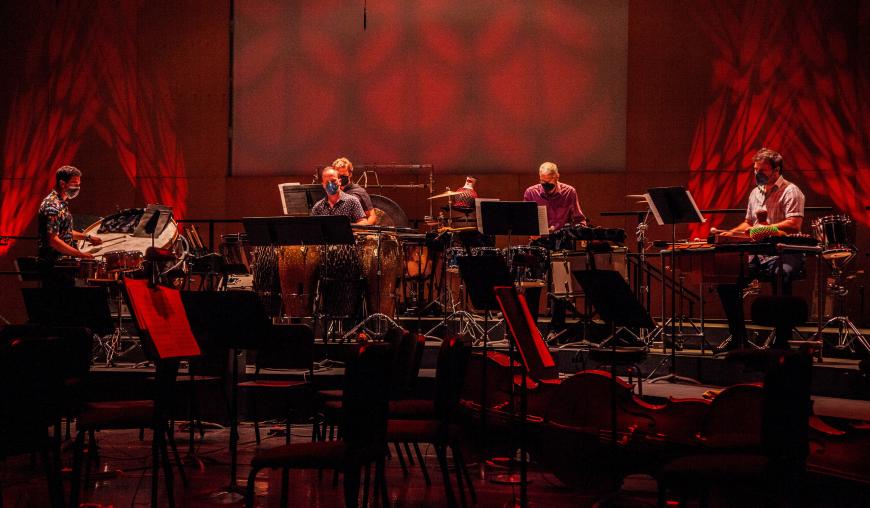
This applies equally to Saturday’s two brief all-percussion works, even more fun to listen to than the Carmen Suite. Both are early pieces by their composers, offered as consolation prizes after full-orchestral works of theirs had to be pulled from the program.
First was Andrea Reinkemeyer’s #@&%!* (expletive deleted). (To pronounce the title, just say the part in parentheses.) Despite the aggressive labeling, this work for four tireless performers is fairly gentle music as percussion pieces go, focused mostly on exploring the timbres of a variety of drums, from the hollow to the resonant. Marimba and xylophone are also prominent. Complex shifting rhythms prevail throughout.
It’s nowhere near as violent as Christopher Rouse’s Ogoun Badagris, which offers twice the energy in half the time span. Uniquely for these concerts, this piece was performed without a conductor: It was led by principal percussionist Galen Lemmon. Deep and dark in sound, with a prominent bass drum, Rouse’s score is full of snaps, crackles, and pops in incessant rhythms.
You can count Saturday’s mixed grill of five varied works as a success in presenting listenable music of recent decades. While the Carmen Suite was a bit lightweight on Sunday after Heggie’s searing Intonations, that song cycle was impressive enough to carry any concert all by itself. The Cabrillo Festival came out intact from its rejiggered weekend.



